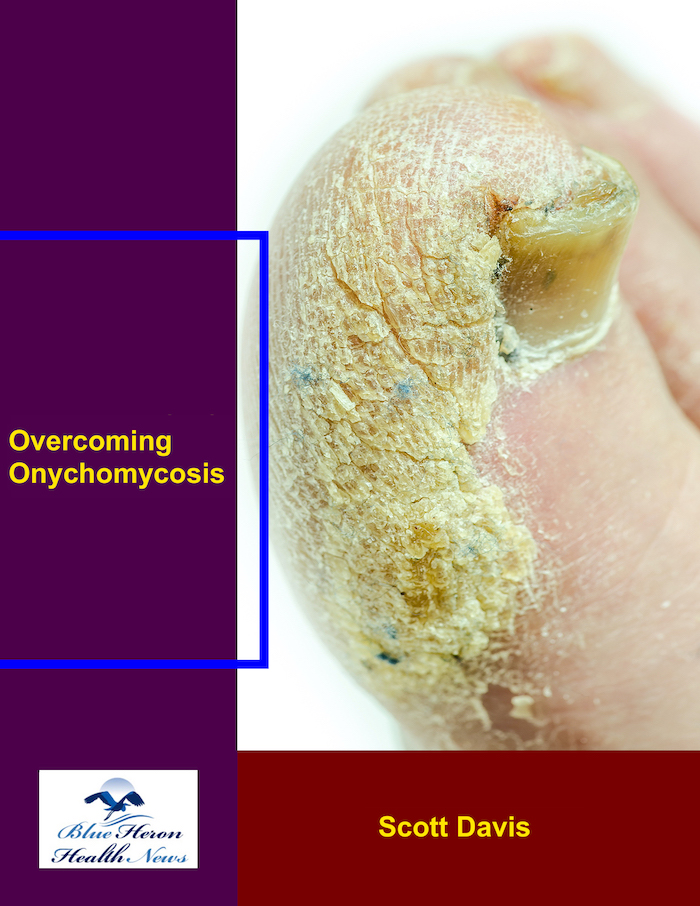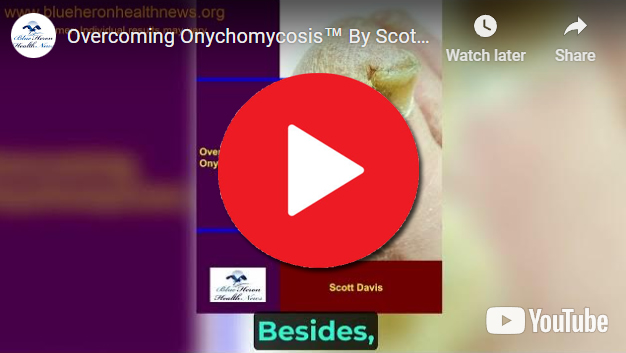
Overcoming Onychomycosis™ By Scott Davis It is a simple, natural, and all-in-one solution for onychomycosis. The program can help you to treat your nail fungus naturally. Once you follow this program, you do not need to spend on expensive treatments to prevent a recurrence. In brief, you can have a proven solution for your chronic nail fungus. Besides, the program is easy to follow, and most users find it effective against onychomycosis.
What are the side effects of oral antifungal medications?
Oral antifungal medications, commonly used to treat onychomycosis (fungal nail infections), can be effective but may also come with a range of side effects. The severity and likelihood of these side effects can vary depending on the specific medication, the dosage, the duration of treatment, and the patient’s overall health. Here are the common oral antifungal medications used for onychomycosis and their associated side effects:
1. Terbinafine (Lamisil)
Common Side Effects:
- Gastrointestinal Issues: Nausea, diarrhea, stomach pain, and indigestion are relatively common.
- Headache: Some patients report headaches while taking terbinafine.
- Rash: Skin rash or itching may occur.
Less Common but Serious Side Effects:
- Liver Toxicity: Terbinafine can cause liver damage, so liver function tests are recommended before and during treatment. Symptoms of liver issues include jaundice (yellowing of the skin or eyes), dark urine, pale stools, severe abdominal pain, and fatigue.
- Taste Disturbances: Loss or alteration of taste (dysgeusia) can occur, which may lead to reduced appetite and weight loss.
- Hematological Effects: Rarely, terbinafine can cause blood disorders, such as neutropenia (low white blood cell count).
- Allergic Reactions: Severe allergic reactions, including anaphylaxis, are rare but possible.
2. Itraconazole (Sporanox)
Common Side Effects:
- Gastrointestinal Issues: Nausea, vomiting, diarrhea, and abdominal pain.
- Headache: Similar to other antifungals, headaches are a common side effect.
- Rash: Skin reactions, including rash and itching.
Less Common but Serious Side Effects:
- Liver Toxicity: Itraconazole can also cause liver damage. Liver function tests are advised during treatment. Symptoms include jaundice, dark urine, and severe abdominal pain.
- Heart Failure: Itraconazole can exacerbate heart failure or cause new onset heart failure. Symptoms include shortness of breath, swelling in the ankles or feet, and rapid weight gain.
- Drug Interactions: Itraconazole can interact with many other medications, potentially leading to serious side effects or reduced efficacy of treatments.
3. Fluconazole (Diflucan)
Common Side Effects:
- Gastrointestinal Issues: Nausea, diarrhea, and abdominal pain are common.
- Headache: Headaches may occur with fluconazole use.
- Rash: Skin rash is a potential side effect.
Less Common but Serious Side Effects:
- Liver Toxicity: Like other antifungals, fluconazole can cause liver issues. Monitoring liver function is recommended, especially for long-term use. Symptoms of liver toxicity include jaundice, dark urine, and upper abdominal pain.
- QT Prolongation: Fluconazole can affect heart rhythm, leading to QT prolongation. This can cause serious heart arrhythmias, especially in patients with pre-existing heart conditions or those taking certain other medications.
- Severe Skin Reactions: Rarely, fluconazole can cause severe skin reactions, including Stevens-Johnson syndrome or toxic epidermal necrolysis.
4. General Considerations for All Oral Antifungals
Monitoring:
- Regular monitoring, including liver function tests and possibly blood counts, is important during treatment to catch any adverse effects early.
Drug Interactions:
- Oral antifungals can interact with a wide range of other medications, including anticoagulants, antipsychotics, and certain antihistamines. It’s crucial to discuss all current medications with a healthcare provider before starting treatment.
Allergic Reactions:
- Though rare, severe allergic reactions can occur. Symptoms include hives, difficulty breathing, and swelling of the face, lips, tongue, or throat.
Conclusion
While oral antifungal medications can be effective in treating onychomycosis, they come with potential side effects ranging from mild to severe. Patients should be aware of these risks and discuss them with their healthcare provider, especially if they have pre-existing conditions or are taking other medications. Regular monitoring and adherence to prescribed dosages can help mitigate some of the risks associated with these treatments. It’s important to seek medical advice if any unusual symptoms occur during treatment.
How can laser therapy help with onychomycosis?
Laser therapy has emerged as a potential treatment option for onychomycosis, a fungal infection of the nails. This method uses focused light to penetrate the nail and target the fungal pathogens causing the infection. Laser therapy offers several advantages over traditional treatments like topical and oral antifungal medications, especially in cases where these treatments are ineffective or contraindicated. Here’s a detailed exploration of how laser therapy can help with onychomycosis:
1. Mechanism of Action
Laser therapy for onychomycosis involves the use of specific wavelengths of light that penetrate the nail plate and nail bed. The energy from the laser is absorbed by the fungal cells, leading to:
- Photothermal Effect: The laser light generates heat, which raises the temperature within the nail and fungal cells. This thermal effect can damage or destroy the fungal cells, inhibiting their growth and ultimately leading to cell death.
- Photomechanical Effect: Some lasers also create microscopic shockwaves that can disrupt the fungal cells’ structure, further contributing to their destruction.
Different types of lasers, such as Nd
lasers (neodymium-doped yttrium aluminum garnet) and diode lasers, are used in this treatment. Each type of laser may operate at different wavelengths, which can affect their penetration depth and the specific type of fungal cells targeted.
2. Advantages of Laser Therapy
Non-Invasive Treatment:
- Laser therapy is a non-invasive procedure, meaning it does not require any surgical incisions. This reduces the risk of infection and other complications associated with invasive procedures.
Minimal Side Effects:
- Unlike oral antifungal medications, which can have systemic side effects such as liver toxicity or gastrointestinal issues, laser therapy primarily affects the targeted area. This local approach minimizes systemic exposure and reduces the risk of side effects.
No Drug Interactions:
- Laser treatment does not involve the use of medications, making it a suitable option for patients who are on multiple medications or those who have contraindications to oral antifungal drugs.
Convenience and Compliance:
- Treatment sessions are relatively quick, often taking less than 30 minutes per session, and typically require fewer sessions compared to the prolonged duration of oral or topical treatments. This can improve patient compliance.
3. Effectiveness of Laser Therapy
The effectiveness of laser therapy for onychomycosis can vary based on several factors, including the severity of the infection, the type of fungus involved, and the specific laser technology used. Some studies have reported promising results, with significant improvement in nail appearance and reduction in fungal load. However, the overall success rates can vary:
- Mild to Moderate Infections: Laser therapy tends to be more effective for mild to moderate infections, where the fungus has not deeply penetrated the nail bed.
- Severe Infections: In cases of severe onychomycosis, where there is extensive nail involvement and thickening, laser therapy may be less effective as a standalone treatment and may need to be combined with other therapies.
4. Treatment Protocol and Sessions
- Number of Sessions: The number of laser therapy sessions required can vary. Some protocols recommend 1-3 sessions, while others suggest more, depending on the severity of the infection and the response to treatment.
- Interval Between Sessions: Sessions are often spaced several weeks apart to allow for the natural growth and improvement of the nail.
- Combination with Other Treatments: Laser therapy can be used in conjunction with topical antifungal treatments to enhance efficacy, particularly in cases where laser therapy alone is insufficient.
5. Post-Treatment Care and Monitoring
- Nail Care: Post-treatment care often includes regular trimming and care of the nails, maintaining good foot hygiene, and possibly using antifungal sprays or powders to prevent reinfection.
- Monitoring Progress: Patients may require follow-up visits to monitor the progress of the nail healing and to determine if additional laser sessions are needed.
6. Considerations and Limitations
Cost:
- Laser therapy can be expensive, and it is often not covered by insurance, as it is considered a cosmetic procedure in many cases.
Variable Efficacy:
- While some patients experience significant improvement, others may see minimal or no improvement. Factors such as the type of fungus, the extent of infection, and individual response can influence outcomes.
Need for Multiple Sessions:
- Successful treatment may require multiple sessions, which can add to the overall cost and time commitment.
Lack of Standardization:
- There is a lack of standardized protocols for laser therapy in treating onychomycosis, which can lead to variability in treatment outcomes.
Conclusion
Laser therapy offers a promising alternative for the treatment of onychomycosis, particularly for patients who cannot tolerate systemic antifungal medications or who prefer a non-invasive approach. The therapy works by using laser light to target and destroy fungal cells in the nail, with minimal side effects and no systemic drug interactions. However, the effectiveness of laser therapy can vary, and it may not be sufficient as a standalone treatment for severe infections. The cost and need for multiple sessions are also considerations. Patients should discuss with their healthcare provider to determine if laser therapy is an appropriate treatment option for their specific case of onychomycosis.
Overcoming Onychomycosis™ By Scott Davis It is a simple, natural, and all-in-one solution for onychomycosis. The program can help you to treat your nail fungus naturally. Once you follow this program, you do not need to spend on expensive treatments to prevent a recurrence. In brief, you can have a proven solution for your chronic nail fungus. Besides, the program is easy to follow, and most users find it effective against onychomycosis.
